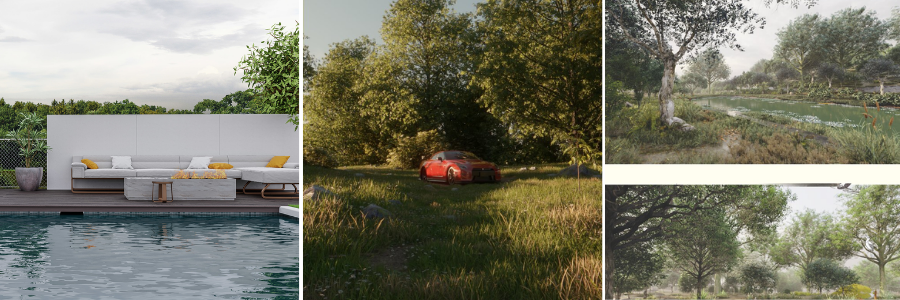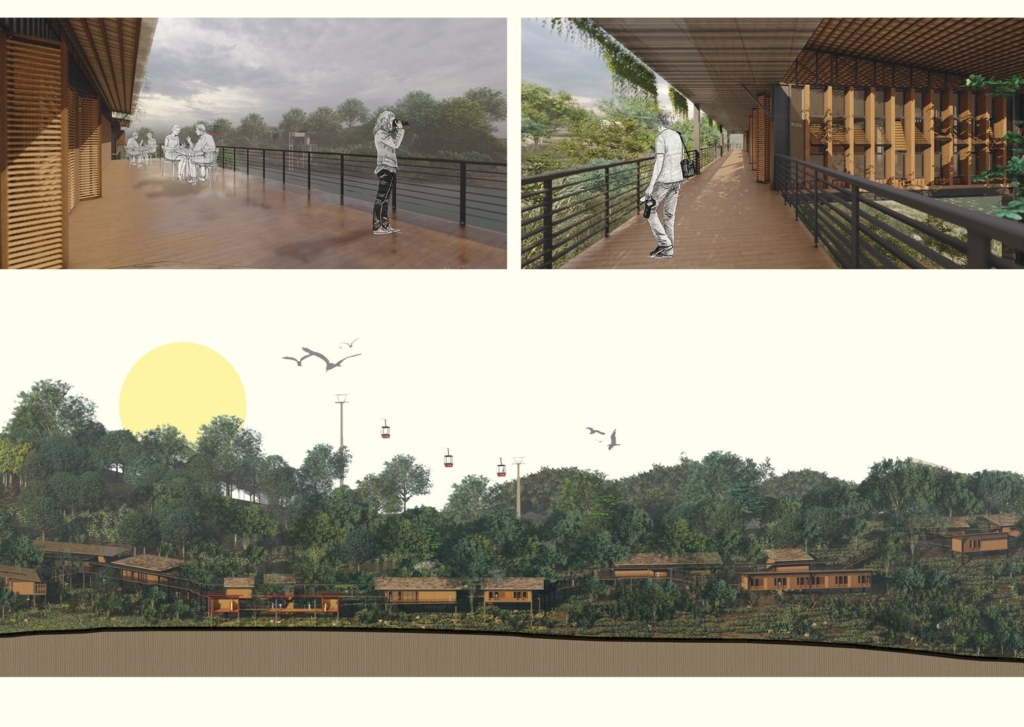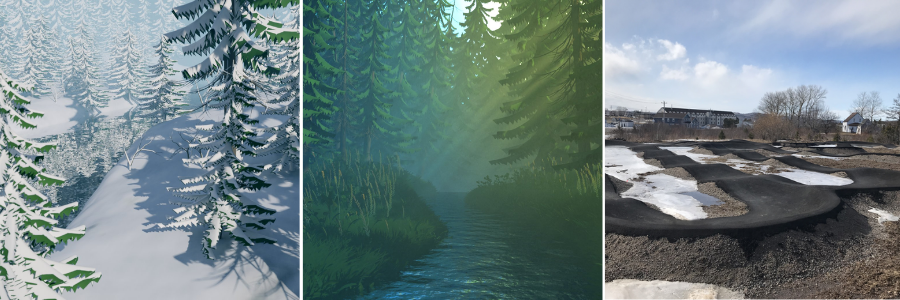The ever-growing demand for super-accurate 3D environments in both gaming and cinema, architectural and virtual reality has assumed a rather imposing proportion. 3D environment design services is the expression of art imbued with high technicality with the purpose of creating a desirable virtual world. Let’s delve deeper into the art and science of designing 3D environments and their core constituent elements, procedures, and deployments.
 Table of contents
Table of contents
The building blocks of 3D environments
Concepting: The blueprint of the virtual world
Every great 3D environment begins with a good idea. Concepting is close collaboration between designers and creative teams to sketch out the visual style, narrative context, and functionality requirements of the environment. This stage may include mood boards, conceptual sketches, and detailed storyboards so that all parties share a clear vision.

Modeling: shaping the landscape
3D modeling services use modeling software to create models that fill up the space. These models can be as big as skyscrapers and large landscapes or as small as props. Some of the key techniques used are:
- Polygonal modeling: This is the most popular technique, which involves creating surfaces using interconnected polygons.
- Sculpting: Ideal for organic shapes like terrain and foliage, sculpting provides great detail.
- Procedural modeling: Algorithmically produces complex structures like cities or forests very efficiently.
Texturing and material creation
Textures are the feature of the model, giving color and pattern to the models. The artist uses UV mapping to wrap a 2D texture over a 3D object, and it has to look seamless. Advanced shaders and materials provide real-world properties like reflection, transparency, and surface roughness.
Textures are the feature of the model, giving color and pattern to the models. The artist uses UV mapping to wrap a 2D texture over a 3D object, and it has to look seamless. Advanced shaders and materials provide real-world properties like reflection, transparency, and surface roughness.
Lighting: setting the mood
Lighting design services can make and break the atmosphere of a 3D environment. It could be a warm sunset or simply a cold industrial glow from a collection of fluorescents, as lighting leads the eye and strengthens the narrative that takes place within that 3D space. More realism is added using global illumination, dynamic lighting, and volumetric effects.
Optimization: balance between quality and performance
The environments of interactive applications such as video games are optimized, which allows running smooth and smooth graphics on devices. Techniques applied in balancing the performance and visual fidelity of such designs include LOD, efficient asset management, and optimized shaders.
RELATED: 3D exterior rendering services for companies: 10 important factors that affect pricing
Tools and technologies shaping the industry
Much of the evolution of 3D environment design is because of new developments in software and hardware that occur all the time. Powerful tools have become part of the art process. Software like Blender, Autodesk Maya, and ZBrush can model and sculpt details with much complexity. Texturing tools, which are specialized to create convincing and photorealistic textures, will help designers catch the life-likeness of realistic 3D models such as Adobe Substance Painter and Quixel Mixer.
Top-of-the-line game engines, namely Unreal Engine and Unity, are able to close the gap between static design and immersive experiences with real-time rendering. Such technology can be applied in fields such as architecture, automotive design, and virtual reality.
Virtual production tools for the film are game changers. Techniques such as combining LED walls and real-time rendering engines allow dynamic environments to be created instantly without the need for traditional green screens and post-heavy workflows.
On the hardware side of things, there is much improvement in the quality and realism of renders with ray tracing-capable GPUs, which allows for simulations of light and shadow that really approach real physics. VR headsets provide designers as well as end-users with highly immersive ways to engage with 3D environments that also significantly enhance the creative process and user experience.
These tools and technologies collectively push the boundaries of what’s possible through 3D environment design professionals, shaping the future of industries ranging from entertainment to engineering.
Applications across industries
The use of 3D environments has dramatically revolutionized many industries to provide innovative solutions and enhance the user experience in unique ways.
Gaming: immersive worlds
In video games, 3D worlds are the basis for an immersive experience. Players adventure through imaginative places or hyper-realistic environments. A very good example of this is in open-world video games, where the player is given expansive, detailed landscapes, giving way to both exploration and interaction. These environments blend gameplay, storytelling, and visual art so that the final experience is deeply immersive and keeps a player’s attention.
Film and animation: storytelling in 3D
The film and animation industries use 3D environments to bring impossible or cost-prohibitive scenes to life. Filmmakers can build an entire world – a bustling, futuristic city or a serene fantasy landscape – using the help of CGI. Digital environments enhance storytelling and allow live-action footage to be seamlessly integrated with fantastical elements, giving cinematic experiences an eye-catching appearance through photorealistic rendering services.
Architecture and real estate: visualization of spaces
Architects and real estate individuals use 3D environment design to create highly photorealistic models of projects when they are only in the initial stages of completion. These 3D models can be explored interactively by those stakeholders to deeply understand spatial relationships and the aesthetics involved. It promotes higher collaboration and information-based decisions at the beginning stage of the process.
Virtual reality and simulation: experience the unreal
Virtual reality is highly dependent on 3D environments to immerse users in alternative realities. From realistic professional training simulations to virtual tourism experiences, 3D VR environments unlock limitless possibilities that integrate entertainment with practical applications for different sectors.
RELATED: 9 ways you can use 3D rendering for marketing your company’s products

Trends that will shape the future of 3D environment design
The field of 3D environment design is highly dynamic because of emerging technologies and changing industry needs. Some of the key trends shaping its future are photogrammetry, AI-powered tools, metaverse development, and sustainability in virtual design.
Photogrammetry and scanning
3D model services feature photogrammetry as the creation of models from real-world photographs. It’s the revolution of design with a reality that’s never been possible before. It captures textures and geometry directly from reality, bridging the gap between the physical and digital worlds. It is highly useful in gaming, film production, and architectural visualization, where lifelike accuracy is needed.
AI-powered design tools
Artificial intelligence is changing workflows in 3D designing. AI eliminates repetitive tasks, generates procedural content, and suggests enhancements to creative projects. Thus, designers are freed to focus on innovative design. AI-powered tools also democratize 3D design services and open access to creators at various skill levels.
Metaverse development
With the increasing popularity of the metaverse, there is a massive demand for vast, networked 3D spaces. Virtual worlds that replicate or surpass the complexity and interactivity of real worlds can now offer the opportunity for immersion in games, social interaction, and commerce.
Virtual design sustainability
Sustainability is rapidly becoming the core focus of 3D design. The virtual production methods, such as digital twins, reduce the need for sets, props, and travel, thus lowering environmental impacts. These advancements also match global trends toward greener practices in creative and industrial sectors.
These trends altogether hint at a prospect of making virtual 3D environments much closer to realness, efficiency, and sustainability than ever before.
RELATED: How to create captivating 3D commercial rendering architecture designs for companies

Issues with designing 3D environments
3D environment design is a field full of potential, but certainly not without its share of hardships. One such major challenge that exists is the balance between realism and creativity. A designer has to create some really immersive, lifelike settings while at the same time fitting these environments within the story or gameplay. That can be very tricky since a highly realistic design can sometimes dominate imaginative or narrative elements.
Technical constraints are also a barrier. The demand for high-quality graphics often clashes with hardware limitations, long rendering times, and the need for compatibility across diverse devices and platforms. Such issues can limit the creative freedom of a 3D designer and require compromises to maintain performance and accessibility.
In addition, interdisciplinary collaboration is important but also difficult. Projects usually require artists, engineers, and narrative designers to work together, sometimes from different time zones and cultural backgrounds. It is not easy to coordinate such a diverse team.
Finally, the field’s rapid evolution means designers must constantly stay updated. Emerging tools, software, and techniques demand continuous learning to remain competitive. This necessity for ongoing skill development can be both time-consuming and demanding, making adaptability a crucial trait for success in 3D environment design.
The role of education and practice in 3D environment design
Mastering 3D environment design demands a combination of formal education and practical application. There are courses in game design, animation, and digital art offered in universities, thus enabling them to be better equipped with foundational knowledge. Even self-taught designers may not go wrong since they can acquire much knowledge using online tutorials, forums, and even mentorship.
A diversified portfolio of varied environments, ranging from busy urban spaces to serene natural landscapes, is important for career growth. Participating in collaborative projects like game jams or short films will boost skills as creativity and teamwork take center stage in these experiences. Technical ability is honed, yet this activity is sure to connect with important people in the field.
Conclusion
3D environment design is an art that will forever evolve with a touch of beauty and technology. From a busy game city to a serene meadow in a virtual reality experience to a future movie world, the vision of designers brings people into places they never thought possible.
How Cad Crowd can help
As the tools and techniques advance, the frontiers of what can be done in 3D environments are forever being expanded. Mastering basic principles and taking risks with innovations can help a designer create timeless virtual worlds that resonate within the audience’s psyche. Cad Crowd will connect you with the top freelance 3D modeling companies you can count on for your 3D environment design and concepts. Request a quote today.
The post A Guide to 3D Environment Design & Concepts with Freelance 3D Modeling Companies first appeared on Cad Crowd.